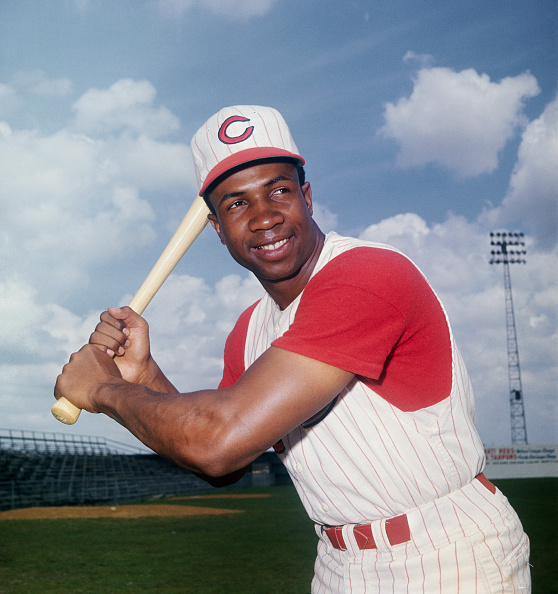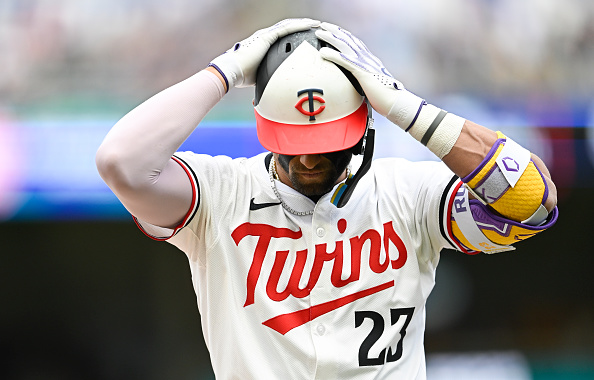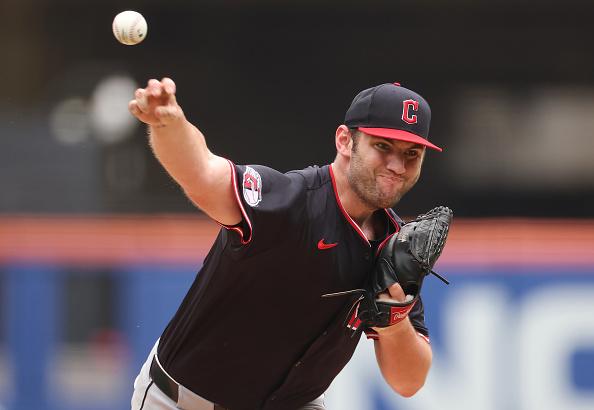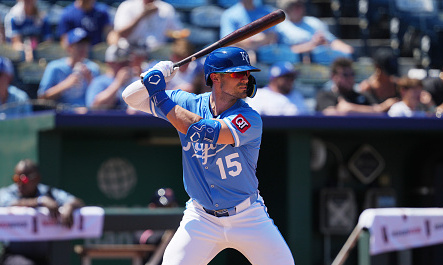Alex Kielar | April 24th, 2019
Every Tuesday we will take a look at the history of one team. You will get some background, iconic players and moments, and postseason results. This week, let’s take a look at the Cincinnati Reds, who have had a very long history.
Early Days
The Reds were founded in 1866 as the Red Stockings where they became fully professional in 1869 as the first openly all-professional baseball team. Playing against inferior competition, Cincinnati went undefeated in their first 81 games, including going 57-0 in their first season. The Red Stockings finally lost a game on June 14, 1870, as they fell to the Brooklyn Atlantics, 8-7 in extra innings, in Brooklyn.
While most Reds fans consider their team the oldest franchise in baseball, Major League Baseball didn’t and doesn’t officially recognize Cincinnati’s first year as 1869, but rather 1882. Cincinnati was one of the founding members of the National League in 1876, with Chicago, Boston, New York, St. Louis, Hartford, Louisville, and Philadelphia being the other cities that would have teams in this league. Cincinnati was then, however, banned from the league in 1880 after playing games on Sundays and allowing the sale of beer at the stadium, which were rules that had yet to officially go into effect. Another league was then formed, the American Association, which would begin play in 1882. Technically speaking, the team that would play for this league was the third team to come out of Cincinnati. When Cincinnati started the National League, they had been dormant for five years after dissolving and the name Red Stockings going to Boston, who would become the Atlanta Braves.
Cincinnati played the next eight seasons in the American Association, winning the Association Pennant in its debut season, and holding a .688 winning percentage. Cincinnati played its final season in the American Association in 1889, as they were granted re-admission into the National League. This move back to the league they were one of the founders of, also sparked them to drop the “Stockings” from their name and just become the Reds. The Reds fielded mediocre teams consisting of aging veterans and local stars for their first three or so decades, never finishing about third place in the NL over these years.
Postseason Success
The Reds first World Series victory came in 1919, a year in which they won 96 games. They won the Series in eight games in the then best-of-nine series against the White Sox. Their title is tarnished, however, as that year was the infamous “Black Sox Scandal” where eight members of the White Sox were accused of throwing the series. Cincinnati insisted they still would have one anyway, but the series will still be remembered most for this scandal, which is depicted in a book by Eliot Asinof and later developed for a movie in 1988, by the name “Eight Men Out”.
The Reds didn’t have lasting success, as they would be stuck at the bottom of the NL for a long stretch of time during the 1920s and 1930s. They finally made it back to the Postseason in 1939, twenty years following their first appearance, as they eclipsed their win total from 1919, winning 97 games. The Reds wound up winning the NL Pennant and going to the World Series, but would run into a Yankees team that won 106 regular season games led by Joe Dimaggio, and were swept. The Reds, led by young star pitcher Johnny Vander Meer and Hall of Fame catcher Ernie Lombardi, made it back to the World Series in a second straight season. The finished the regular season with 100 wins. They were able to return to glory this time around, winning their second World Championship by beating the Detroit Tigers in seven games.
The Reds had several years of disappointment, as they had 10 straight losing seasons from 1945-55. Cincinnati finally got a jolt in 1956, as they called up Frank Robinson who would become one of the biggest stars in the game. Robinson led the Reds to 91 wins in that season, but the Reds would finish in third place in NL. Robinson won the Rookie of the Year that year after slashing .290/.379/.558 with 38 home runs and 83 RBIs. The Reds, after a few years of more disappointment, were able to take back the NL Pennant in 1961, led by Robinson, after getting by the Los Angeles Dodgers and San Francisco Giants who had recently moved to California.
In what almost seemed like bad luck at this point, the Reds again ran into another tough Yankees team, this time led by Mickey Mantle, Roger Maris, and Whitey Ford. This being the season that Roger Maris beat Babe Ruth‘s single-season home run record by mashing 61. The Reds weren’t swept this time around, but they did lose in five games.
The Reds had a few more solid seasons throughout the decade but weren’t able to win any pennants, coming closest in 1964 when they came one game short. Right after the end of this season, the beloved manager of the Reds, Fred Hutchinson, passed away of cancer. Then, in what is looked at as possibly the most lopsided trade in baseball history, Reds’ owner Bill DeWitt sent Frank Robinson to the Orioles for pitchers Milt Pappas, Jack Baldschun, and outfielder Dick Simpson. Robinson wound up winning AL MVP, winning the Triple Crown, and leading the Orioles to their first title in 1966. Meanwhile, the Reds finished below .500 and sat at the bottom half of the NL.
Big Red Machine
The Reds began the decade they would dominate the baseball world by hiring George “Sparky” Anderson as the manager in 1970. During that season, the Reds moved from their original stadium Crosley Field, playing there for the final time on June 24, to the brand new Riverfront Stadium. Johnny Bench, Tony Perez, Pete Rose, Lee May, and Bobby Tolan were the early leaders on offense for “The Big Red Machine” and Gary Nolan, Jim Merrit, Jim Maloney, and Jim McGothlin led the pitching staff. The Reds made it look easy throughout the 1970 season, as they won 70 of their first 100 games, finished with 102 wins in the regular season, and swept the Pittsburgh Pirates in three games in the NLCS to win the pennant.
But almost as if they were being punished for trading MVP winner Frank Robinson, they met him and the Baltimore Orioles in the World Series, where they would lose in five games. The Reds had a horrible season in 1971, as they finished with another losing record, and thus went on to trade veterans and one of the players they got in return was Joe Morgan.
The 1972 MLB season was the first ever strike-shortened season and the Reds won the NL West and met the Pittsburgh Pirates in the NLCS. That series would go an exciting five games, where the Reds would defeat the Pirates by scoring two runs in the bottom of the ninth to walk off and clinch the pennant. The Reds met the Oakland Athletics in the World Series (read about the A’s history in my previous team history article) where the series would go to a deciding seventh game. The Reds fell in that seventh game and continued to just fall short of returning to glory.
The frustration would continue in 1973, in a season they won a third NL West Crown. They made up 10 1/2 games on the Dodgers after the All-Star break. The Reds were favorites to return to the World Series once again but fell to the New York Mets in five games in a classic and controversial series. During Game 3, Pete Rose slid hard into Mets’ shortstop Bud Harrelson which led to some scuffling and a bench-clearing brawl. Two more incidents occurred throughout the game leading to the game having to be stopped.
The peak years of “The Big Red Machine” were 1975-76 where they had an unbelievable lineup of Johnny Bench, Tony Perez, Joe Morgan, Dave Concepcion, Pete Rose, Ken Griffey, Cesar Geronimo, and George Foster. During the 1975 season, the Reds went a stretch of winning 41 of 50 games and also a very impressive stretch of not committing any errors for an entire month. The Reds went a remarkable 64-17 at home and finished with a franchise record 108 wins, winning the NL West by 20 games over the Dodgers. They would then go on to meet rival Pittsburgh once again and swept them en route to the World Series once again.
The Reds competition in the World Series was the Boston Red Sox, and the Reds would win game five to take the series lead after the first four games were split. Game 6 was one of the most memorable games in history and viewed by some as the best World Series game in history (in my opinion that title goes to Game 7 of the 2016 World Series). In that game, the Reds held a 6-3 lead with five outs remaining, until Bernie Carbo smacked a pinch-hit three-run home run to tie the game at 6. Then, neither team was able to score until the 12th inning, when Carlon Fisk happened. “There it goes a long drive, if it stays fair, home run.” Fisk’s dramatic home run went off the foul pole and forced a Game 7. The Reds finally prevailed in Game 7, Joe Morgan providing the go-ahead RBI in the 9th inning. Pete Rose won the series MVP after helping the Reds come from behind in each of their victories, going 10-for-27.
The Reds returned all their starting hitters in 1976 and had a rotation led by Gary Nolan along with other starters Don Gullett, Jack Billingham, Pat Zachry, Santo Alcala, and Fred Norman, who as an underrated rotation, had four of their six starters with ERAs below 3.10. The Reds didn’t have as many victories as they did in 1975, but they did lead the league in all major statistical categories. The Reds swept both the Phillies and Yankees to win their second straight championship, finally getting the best of the Yankees. Many baseball historians even considered this Reds team as the second best ever behind the 1927 Yankees.
End of an Era
The Reds’ “Big Red Machine” saw its end in 1977 and 1978 as most of their star players were either traded or signed elsewhere. Pete Rose played his final year in Cincinnati at the time in 1978, and during this season he gave the baseball world a thrill as he got the closest anyone has ever come to Joe DiMaggio‘s 56-game hit streak with a 44-game streak. Rose also picked up his 3,000th career hit and would become the all-time record holder when he rejoined the Reds as a player-manager in the mid-80s with 4,256 career hits.
Rose signed with Philadelphia as a free agent following the season. That season also saw Tom Seaver, who was acquired by the Reds in 1977 from the Mets, pitch the only no-hitter of his career against the St. Louis Cardinals. The Reds had the best overall record in 1981 but missed the playoffs because of a mid-season strike which resulted in two half-seasons and the Reds finished second in the half-season.
Shocking the World and the “Nasty Boys”
Prior to the 1990 season, the Reds brought in former Yankee player and manager to manage them and they surprised the whole league and world that season. Led by Chris Sabo, Barry Larkin, Paul O’Neill, and Eric Davis at the plate and in the field, and by the starting staff of Jose Rijo, Tom Browning, Rob Dibble, Norm Charlton, and Randy Myers, who were dubbed the “Nasty Boys”, the Reds started off winning their first nine games and starting 33-12.
The Reds became the first NL team to ever hold first place for the whole season, as they held off the Dodgers to clinch the NL West. The Reds got by the Pirates in the NLCS in six games and were set to face a tough A’s team in the World Series. But the Reds didn’t make it look tough at all in sweeping Oakland, led by Series MVP Jose Rijo, who started and won Game 1 and clinching Game 4. Rijo only surrendered 1 earned run and struck out 14 over 15.1 innings against a tough A’s lineup. Chris Sabo led Reds’ hitting going 9-for-16 with 5 RBIs and 2 home runs for the series.
Other Notable Moments, Stats, and Players
1938: Johnny Vander Meer makes history by pitching two consecutive no-hitters on June 14 and June 18. No one has ever done it since.
1947: On July 25, Ewell Blackwell sets the club-record of winning 16 consecutive starts.
1949: On July 6, Walker Cooper sets the club-record of 10 RBIs in one game.
1977: George Foster smashes a club-record 52 home runs and runs away with MVP voting after hitting .320 while driving in 149 runs and scoring 124 runs.
1988: On September 16, Tom Browning becomes the first Reds pitcher to hurl a perfect game, as he sets down all 27 Dodgers.
1989: Reds hero and manager at the time, Pete Rose, is given a lifetime ban from baseball on August 24 for betting on baseball.
1995: Barry Larkin wins the MVP after setting the club record for shortstops with a .319 average and 51 stolen bases.
1996: Barry Larkin becomes the first shortstop in ML history, hitting his 30th home run on September 22.
1999: Eight different Reds homer nine times in 22-3 bashing of the Phillies at Veteran’s Stadium on September 4. The Reds would hit their most home runs since 1956 (221) with 209 that season.
2003: Great American Ballpark opens on March 31, before a sellout crowd of 42,343.
Check out our Other Team Histories: San Diego Padres | Oakland A’s
Questions and comments?
thescorecrowsports@gmail.com
Follow Us on Twitter @thescorecrow
Follow Us on Reddit at u/TheScorecrow
Follow Us on Facebook at The Scorecrow
Follow Us on Instagram at The Scorecrow
Follow Alex Kielar on Twitter @TPE_ScorecrowAK
Main Image Credit:
[getty src=”515021806″ width=”558″ height=”594″ tld=”com”]







